Melbourne’s love affair with coffee has been long-term, passionate, and sometimes controversial. In colonial times, street stalls on Hoddle’s Grid sold coffee to passersby. Most of the stalls were run by men.
A Melbourne coffee stall; H41891
Melbourne writer Marcus Clarke described a typical coffee stall in his newspaper columns, compiled in the pamphlet The Peripatetic Philosopher:
‘It consists of a barrow upon which is placed a large board, sometimes covered with oil cloth, and protected with an awning. On this board are set… a huge can of polished tin, with brass nozzle and spout. This tin holds about four or five gallons of coffee, which is kept hot by means of a pan of charcoal placed underneath it. By the side of the tin are ranged cups – very thick and heavy, sandwiches, greasy cakes, and a sort of plumduffs of very satisfying character…’ [1]
The coffee stand- early dawn; IAN24/12/63/13
Up to the early 1870s, Melbourne’s coffee stalls could stay open all night long. Shopkeepers believed they were good for business. Restauranteurs disagreed, arguing the stalls stole their business and attracted riff raff.
By the 1880s, the heart of Melbourne’s coffee stall precinct was at the corner of Bourke and Swanston Streets. These ‘strange square boxes, with funnels sticking out of the roof’ would slowly bring the city alive at night: ‘like a fairy scene at a pantomime’. [2]
Bourke Street on Saturday Night; IAN31/10/77/168a; IAN31/10/77/168b
The success of the temperance movement saw the emergence of coffee taverns and coffee palaces in the 1880s. Perhaps the most famous of these was the Federal Coffee Palace, which housed ‘over 500 drawing, dining, reading, sitting, smoking, billiard and bedrooms and the largest dining hall in the country’ [3]. However, the financial woes of the 1890s saw the popularity of Melbourne’s coffee palaces decline.
Twentieth century Melbourne saw the rise of cafes and coffee lounges. Cafes such as Fasolis and Café Petrushka played host to Melbourne’s bohemian crowd, attracting writers, poets, artists, and hangers on: the ‘famous, near-famous, flash-in-the-pan famous…famous to be’, and ‘garrulous never-to-be-famous’ [4].
The night birds of Melbourne; PN12/05/77/00
The arrival of American troops in Australia during World War II heralded a marked increase in the quality of Melbourne’s local coffee brew – from a boiled concoction featuring chicory essence – to a more sophisticated brew using the latest coffee roasting and grinding techniques from America. [5].
Cast Iron & Brass Coffee Grinder by Archibald Kendrick & Sons Ltd West Bromage. Photograph by Mark Strizic. This work is in copyright; H2008.11/606
In the fifties a coffee revolution occurred. Melbourne experienced an influx of post-war migrants, and with the Italians came the espresso. Mario Brunelli’s grocery at 262 Lygon Street began serving coffee with an espresso machine. Others followed. In May 1954, Melbourne coffee pioneers the Bancrofts opened the first espresso café with a commercial coffee machine.
Vintage espresso machine at the “Gypsy Bar”, Brunswick St, Fitzroy, Melbourne. Photograph by Rennie Ellis. This work is in copyright; H2011.150/1585
Espresso bars flourished in Melbourne’s city and its suburbs. They served as both a place where migrants could meet and socialise, and a breath of fresh air for Melbourne’s existing residents.
Not everyone was enamoured though. Conservatives denounced espresso bars as magnets for unsavoury characters and illegal activities.
On 14 January 1961, The Truth newspaper ran an expose on ‘espresso bar vultures’, alleging that espresso bars were being used as a cover for prostitution rackets. In the ensuing weeks the press ran stories on migrant-led vice. An interview with an ‘Espresso Bar Girl’ called ‘Jill’ was broadcast on radio and tv. Melbournians listened spellbound as ‘Jill’ outlined how she was victimised by teenage prostitution gangs in the city’s espresso bars.
Eventually, it was revealed that ‘Jill’ made up her story at the behest of police and the press. The reputation of Italian migrants had been seriously harmed, but thankfully, the damage was not permanent. [6]
Today, Melbourne’s coffee culture is revered around Australia. The Italian community is at its heart.
Pellegrini’s and The Paperback Books, Bourke Street, Melbourne, Victoria. Photograph by Debra McFadzean; H2009.170/23
References
[1] Cited in Brown-May, Andrew. Espresso! Melbourne Coffee Stories, Arcadia, Melbourne, 2001, p. 18.
[2] Ibid, p. 20.
[3] Brown-May, Andrew. Espresso! Melbourne Coffee Stories, Arcadia, Melbourne, 2001, p. 28.
[4] Porter, Hal, The Paper Chase , p. 98.
[5] Brown-May, Andrew, Op. Cit., p. 38.
[6] Brown-May, Andrew, Op. Cit.

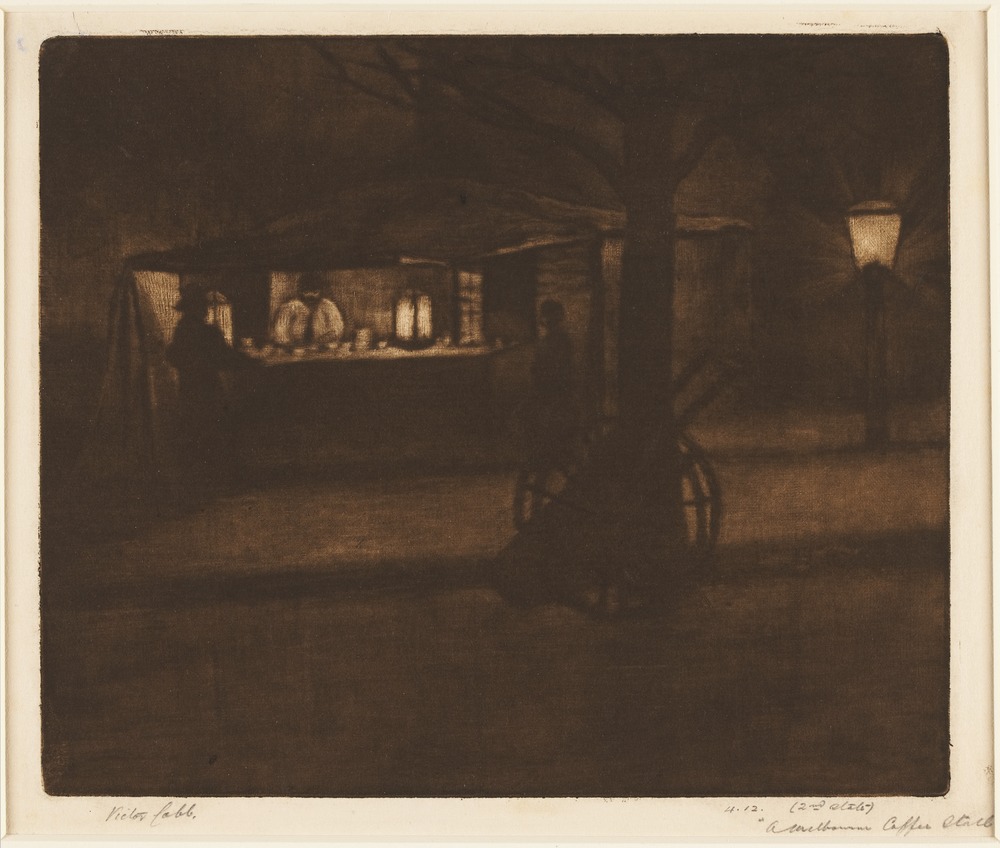
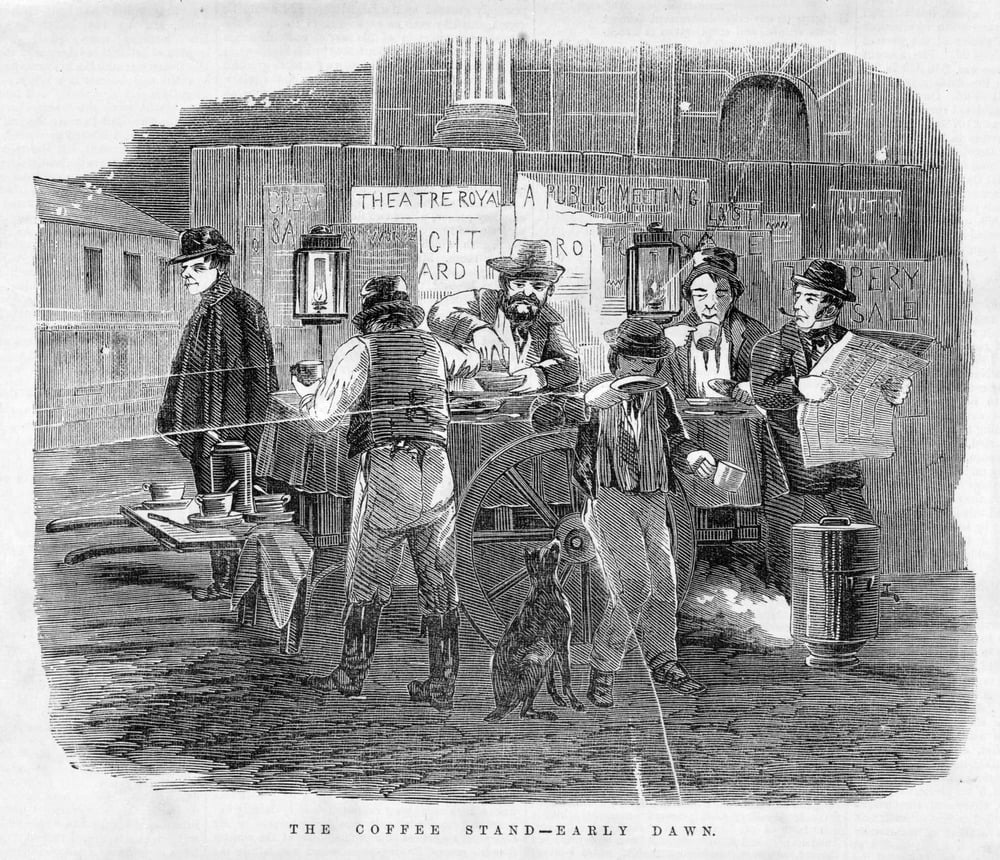
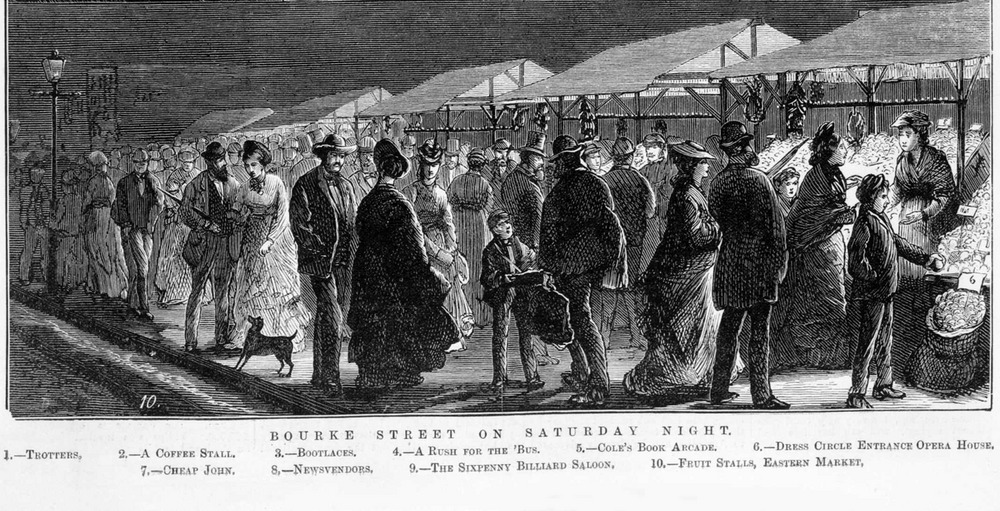

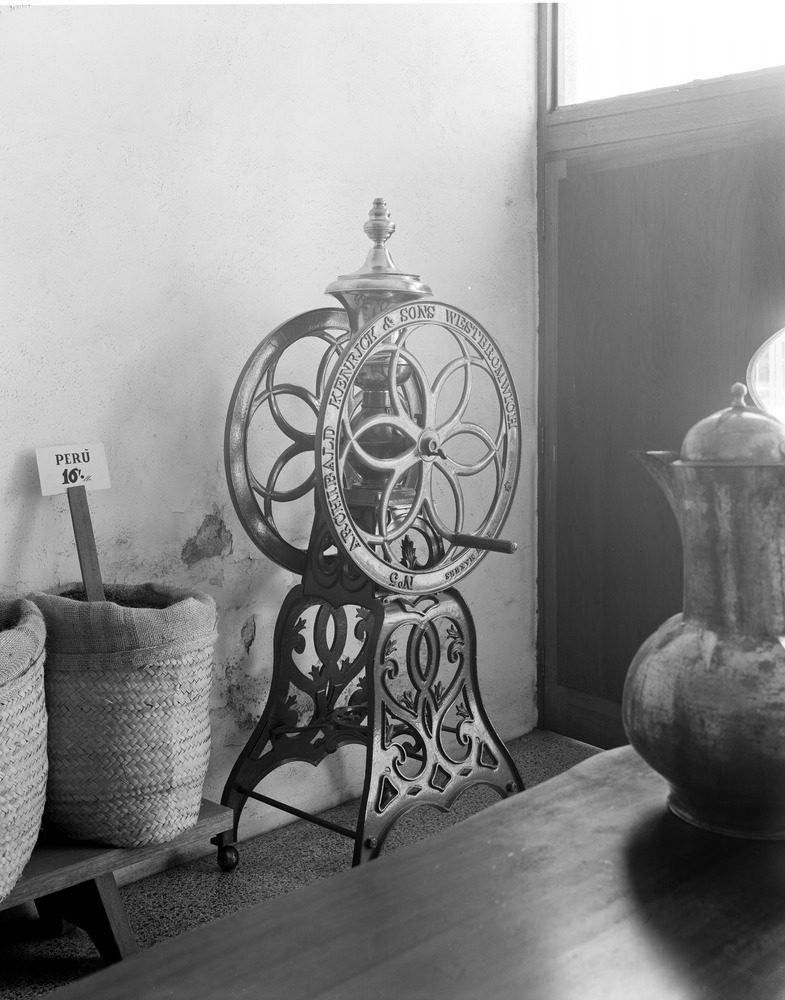
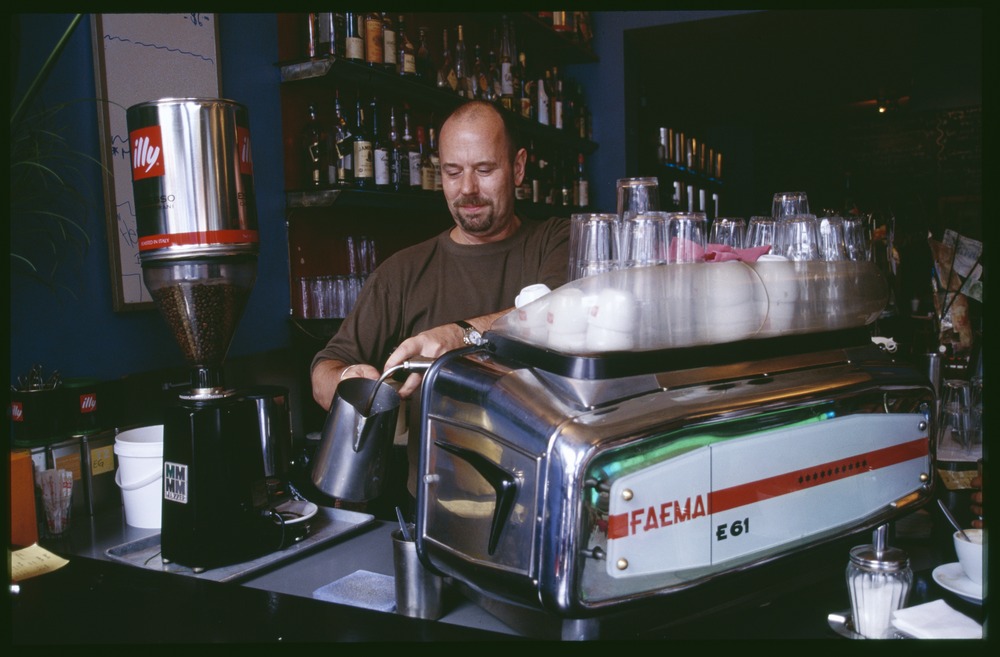
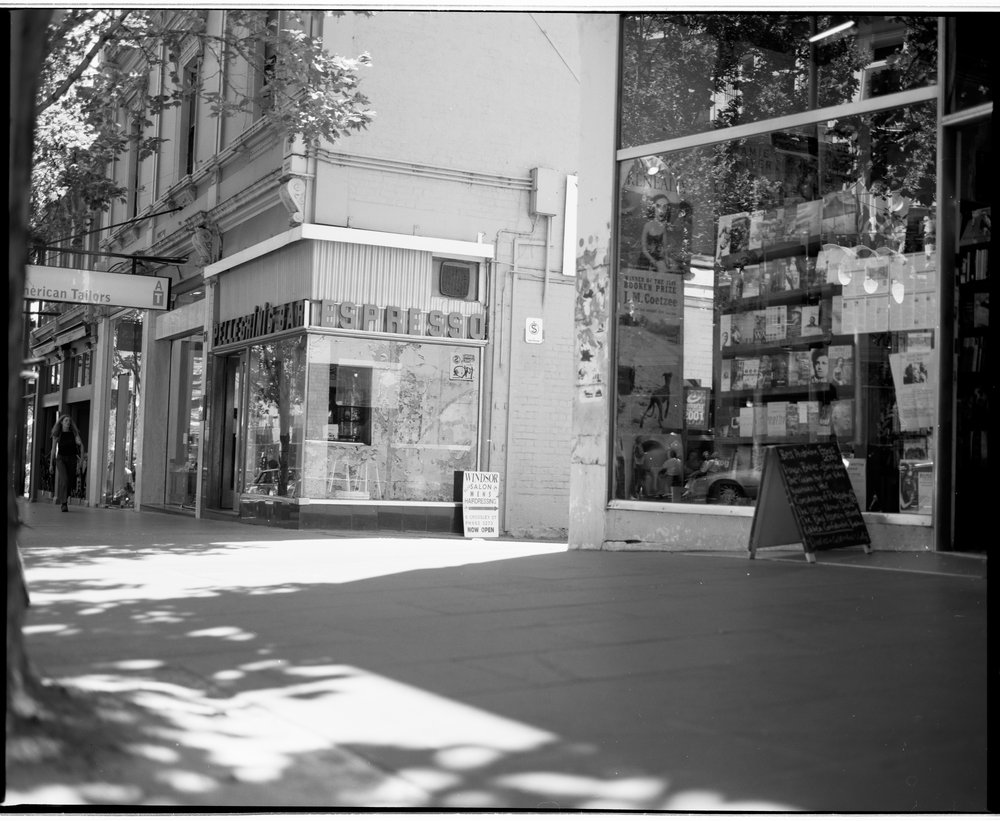

thank you
A nice article on our coffee culture, something close to my own heart. Great to see some fine images from the SLV collection too.
Thanks Jane!
I enjoyed your little ‘cup’ of Melbourne’s coffee history and the lovely images, particularly Victor Cobb’s beautifully moody mezzotint. I am not familiar with his work and will be searching your collection for more.
Coffee lovers may know that Brunetti Cafe in Carlton has a FAEMA E61 as a feature piece at one of the tables there – it’s worth a visit.
Thanks Susan. Yes, the mezzotint is wonderfully evocative, isn’t it.
Great to know that some of the old vintage espresso machines are still around too.
A great piece of history, I had no idea our coffee culture went back so far in time. Thanks for sharing this article Sarah
Thanks David. Glad you enjoyed it.
WONDERFUL…thank-you Sarah,
The first espresso machine in Australia, according to the Massoni family, was installed by Rinaldo Massoni at the Café Florentino in 1929.
With a mixture of Italian family pride and good Aussie idiom, a Massoni descendent says: “The first commercial espresso machine was installed in the Café Florentino, Burke Street Melbourne by my grandfather Rinaldo Massoni in 1928.
Patrons were delighted as this large machine hissed, plumed and gushed streams of aromatic coffee, which they promptly drank copious amounts of this delicious liquid.
Any other claim in this regard is pure southern matter dropped from a north bound bull.“
Hi Peter, Thanks for your interest in our blog. The contribution of Rinaldo Massoni to Melbourne’s coffee culture is acknowledged on pages 50-51 of Espresso! Melbourne coffee storieshttp://search.slv.vic.gov.au/MAIN:SLV_VOYAGER1057905. Historian Andrew May writes: ‘The Florentino restaurant is credited with having one of Melbourne’s earliest espresso-style’ machines. When the restaurant farewelled its ‘boiler-shaped coffee machine’ in 1952 for a new Italian machine it was estimated that ‘the old machine had made over seven million cups of coffee from 30 tonnes of beans’. However, the rise of the post war ‘espresso bar’ culture in Melbourne is generally attributed to the 1950s, and it is in this context that Mario Brunelli’s espresso machine was significant. Cheers, Sarah.
Pingback: A Melbourne love affair – SARAH MATTHEWS | Jack Walker
Wonderful to read this history of coffee falling in and out of favour in Melbourne. Those early pictures seem a world away from today.
I love social history. What a well researched, interesting piece. BTW, I started an Australian Social History FB group last year.
Pingback: For the love of coffee – Melbourne – Barker St
What a lovely story about having a cuppa in Melbourne. I am imagining myself into the 1880s at the corner of Swanston and Bourke, but I’m coming back to 2016 for the plumbing …
Thanks for this information. I love reading about the history of Melbourne. In the 1940s and 50s my mother, who was of British descent, loved her coffee. She purchased it from the local grocer in East Malvern, who displayed the beans in hessian bags, and ground them to order with a large electric grinder. She prepared the coffee with a dripolator. Not espresso, but still very aromatic.
nice info thanks
great information so thankful to you.
Is this Peter Kuketz who spent some time Trinidad with Hollies Blackman, if this is you please get in touch with me Wayne Blackman – whlblackman@yahoo.com. Thank you
Hi Sarah
I have just stumbled on this page… I know so many years later!
I am Mario Brunelli’s daughter. Thank you for noting his significance in the commencement of Melbourne’s coffee culture. I am so proud of what he and my mother achieved with their ‘have a go’ attitude to life.
In a twist of fate, I became close friends with the daughter of the man that installed that coffee machine!
Regards
Eliana
Hello Eliana, you’re welcome! I’m so glad you enjoyed it. Regards, Sarah
Sad to see Degraves closed this year in late December 2021, after 25 years. Not one of the very early Cafe’s, but certainly one that helped define Melbourne’s coffee culture.
I have been searching now for the name of a favourite and rather posh (for a student) coffee lounge that was in Collins St, just up from the Australia Hotel towards Swanston St. This was in 1965 and it was below street level.
Hi Chris, Thanks for your comment. I will log your enquiry with our Ask a Librarian service, and one of our librarians will get back to you. Sarah
Great article